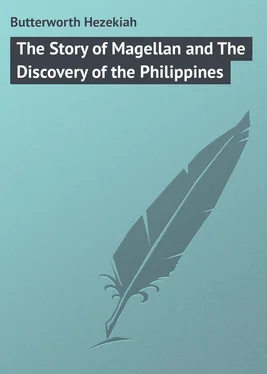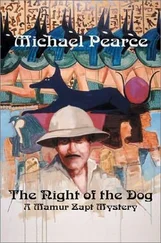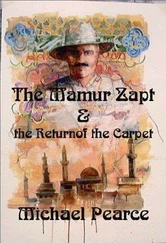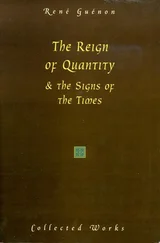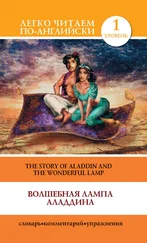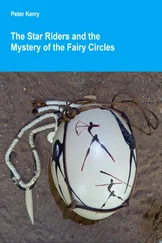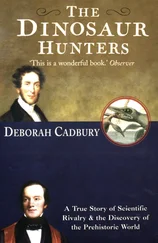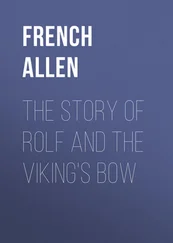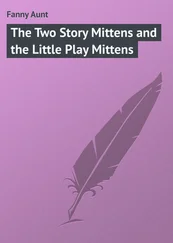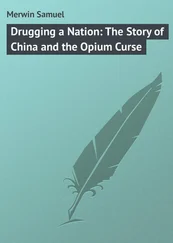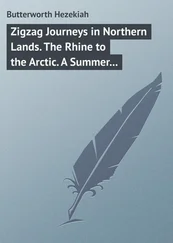Hezekiah Butterworth - The Story of Magellan and The Discovery of the Philippines
Здесь есть возможность читать онлайн «Hezekiah Butterworth - The Story of Magellan and The Discovery of the Philippines» — ознакомительный отрывок электронной книги совершенно бесплатно, а после прочтения отрывка купить полную версию. В некоторых случаях можно слушать аудио, скачать через торрент в формате fb2 и присутствует краткое содержание. Жанр: foreign_prose, на английском языке. Описание произведения, (предисловие) а так же отзывы посетителей доступны на портале библиотеки ЛибКат.
- Название:The Story of Magellan and The Discovery of the Philippines
- Автор:
- Жанр:
- Год:неизвестен
- ISBN:нет данных
- Рейтинг книги:3 / 5. Голосов: 1
-
Избранное:Добавить в избранное
- Отзывы:
-
Ваша оценка:
- 60
- 1
- 2
- 3
- 4
- 5
The Story of Magellan and The Discovery of the Philippines: краткое содержание, описание и аннотация
Предлагаем к чтению аннотацию, описание, краткое содержание или предисловие (зависит от того, что написал сам автор книги «The Story of Magellan and The Discovery of the Philippines»). Если вы не нашли необходимую информацию о книге — напишите в комментариях, мы постараемся отыскать её.
The Story of Magellan and The Discovery of the Philippines — читать онлайн ознакомительный отрывок
Ниже представлен текст книги, разбитый по страницам. Система сохранения места последней прочитанной страницы, позволяет с удобством читать онлайн бесплатно книгу «The Story of Magellan and The Discovery of the Philippines», без необходимости каждый раз заново искать на чём Вы остановились. Поставьте закладку, и сможете в любой момент перейти на страницу, на которой закончили чтение.
Интервал:
Закладка:
In view of his abode on a tall headland were the ruins of a Druidical temple, where Strabo tells us the gods used to assemble at night under the moon and stars. So the place was called the Sacrum Promontorium, and it was in this region that Prince Henry schooled his soul in navigation and sought to inspire all adventurers upon the sea. "Farther" was his motto, and "Farther yet!" In his solitude he called to him a company of restless spirits with a passion for discovery, and said to them all, "Farther," and "Farther yet!"
The night of the dark ages was passing, and in the new dawn of civilization, Prince Henry had visions of new ways to India, the magnificent; the land of gold, gems, and spices, where the sun shone on gardens of palms and seas of glory.
There were no lighthouses then on the African coast; there were no sea charts, and the compass was but little known. But there were eternal stars, and under them were the living instincts that awaken genius.
Prince Henry the Navigator was the fourth son of King Joao I, or John the Great, and of Queen Philippa, of the Roses. He was a great-grandson of Edward III, of England.
Prince Henry's motto was " Talent de bien faire " – "talent of good faculty." The motto furnishes in brief a history of his life.
The first fruit of Prince Henry's geographical studies was the discovery of the islands of Madeira; but there were islands beyond Madeira, and his restless spirit cried out in the night: "Farther!" and "Farther yet!"
Cape Bojador, farther "than the farthest point of the earth," rose just before the supposed regions of sea monsters, fire, and darkness. Prince John sent a navigator there, and found serene seas.
"Farther!"
In 1446 the Prince obtained a charter of the Canary Islands. His ships next discovered the Azores. But there were lands and islands and seas "farther yet."
Prince Henry died in 1463, about thirty years before the triumph of Columbus.
He was the father of modern discovery, the spirit of which rested not until the map of the whole world could be drawn. He was buried in a splendid tomb, and the pupils of his school of cosmography and navigation continued to penetrate the ocean farther and farther to the South and West. Vasco da Gama opened the ocean ways to India, and the two great navigators, Columbus and Magellan, owed much to the spirit of the Prince who left courts that he might found a school amid the sea desolations of St. Vincent, in order to inspire young sailors to venture always "Farther!" and "Farther yet!"
We must here tell you something of Vasco da Gama, in order that you may better understand the plan and purpose of Magellan.
Take your map of the world. Before the passage to India was discovered by sailing around the Cape of Good Hope, Africa, the trade between Asia and Europe was carried on in this manner: There was a great commercial city on the southern coast of Arabia (Arabia Felix) called Alda, or Port Alda. It was a city of merchants. To this port came the ships from the East – China, Japan, India – laden with gold, silk, and spices. The merchants of Alda carried these goods to the Port of Suez on the Red Sea. Thence the merchandise was conveyed on camels to the Nile and to Alexandria, Egypt, and thence by ships to the ports of the Mediterranean.
Vasco da Gama discovered a new way to India by doubling the Cape of Good Hope, and when he returned from that voyage all Europe rang with his praise. His discovery of the way to India from the Mediterranean by rounding Africa was one of the most momentous ever made. Vasco da Gama holds rank with Columbus in the unveiling of the mysteries of the ocean world.
King John the Navigator had heard such wonderful tales of India that he wished to find a way there by water. He accordingly sent one Bartholomeu Diaz on an expedition with this end in view. Diaz did not find India, but he found a cape on the southernmost point of Africa, which he doubled.
So fearful were the tempests there that he called it the Cape of Storms.
But King John saw that the islands of India lay in that direction, and he exclaimed in delight on hearing Diaz's narrative of the tempestuous place:
"'Tis the Cape of Good Hope!" This gave the cape its name.
A Jewish astrologer told Dom Manoel, King of Portugal, that the riches of India could yet be found by way of the sea. Of such a discovery the new King dreamed. Who should he get to undertake a voyage with such a purpose?
One day, as he sat in his halls among his courtiers and grandees studying maps, a man of about thirty years, who had a noble bearing, entered an outer apartment. A sword hung by his side.
The King, who had been thinking of his great mariners, lifted his face and said:
"Thank God! I have found my man. Bring to me Vasco da Gama."
He it was that stood in the outer hall.
"Vasco," said the King, "I know your soul. For the glory of Portugal you must find India by the way of the sea!"
"I am at your service, sire, while life shall last."
"Depart in all haste."
It was March, 1497. Vasco da Gama raised his sails and departed from Lisbon.
He passed the "Cape of Good Hope," and met with many adventures, the narratives of which would fill a book.
He crossed the India Ocean, blown pleasantly on by the trade winds.
One day a loud cry arose:
"Land! land!"
The pilot came running to Vasco da Gama, and fell at his feet.
"Captain, behold India!"
The shores of India rose in the burning light of the tropic seas. Vasco da Gama saw them and fell upon his knees.
Mountain rose above mountain, and hill over hill; then green palms and shining beaches came into view like scenes of enchantment.
"That is Cananor," said the Moorish pilot; "the great city of Calicat is twelve leagues distant."
They sailed over those twelve leagues of clear resplendent waters and came to Calicat, or Malabar. That day of discovery was Portugal's glory.
Calicat was a merchant city of the East, and one of the most famous of India. Here came Arabian and Egyptian merchants. It was a Mohammedan city, and the princes of Calicat encouraged trade between the Arabs and Hindoos. The city was now to become an emporium for the Western World.
After many adventures in Malabar, Vasco da Gama cruised along the coast of India. Everything was wonderful, and the wonders grew.
In September, 1499, he returned, and was received like a sovereign by the Portuguese King. His arrival was a holiday, the glory of which has lived in all Portuguese holidays until now.
He was given titles of distinction. He was made a Viceroy of India.
Twenty years after these events Magellan was destined to discover another way to India.
CHAPTER IV
THE ENTHUSIASTS CARRY THEIR PLANS TO THE KING
Magellan, full of his project of finding a short way to the rich spicery by sailing West, now sought the favor of the Spanish court. Gold has ever been the royal want, and nobles have always had open ears to schemes that promised to fill the public treasury.
Magellan's interesting friend Francisco Serrao, who had remained in the Indian possessions of the Portuguese, after Magellan's return, had discovered resources of the tropical seas of the Orient that were almost boundless. He had written to Magellan:
"If you would become rich return to the Moluccas."
This letter would be a sufficient passport to the nobles who had the ear of the King. He showed the letter to the King's ministers.
He thought that the point of South America turned westward , as the Cape of Good Hope toward the East. He had an imaginary map in his mind of an ocean world whose shape had no real existence, but that answered well as a theory.
Magellan had brought a globe from Portugal on which he had drawn the undiscovered world as he thought it existed. The strait which he had hoped to find was omitted on this globe in his drawings that no navigator might anticipate his discovery.
Читать дальшеИнтервал:
Закладка:
Похожие книги на «The Story of Magellan and The Discovery of the Philippines»
Представляем Вашему вниманию похожие книги на «The Story of Magellan and The Discovery of the Philippines» списком для выбора. Мы отобрали схожую по названию и смыслу литературу в надежде предоставить читателям больше вариантов отыскать новые, интересные, ещё непрочитанные произведения.
Обсуждение, отзывы о книге «The Story of Magellan and The Discovery of the Philippines» и просто собственные мнения читателей. Оставьте ваши комментарии, напишите, что Вы думаете о произведении, его смысле или главных героях. Укажите что конкретно понравилось, а что нет, и почему Вы так считаете.
